关于行为艺术教学的对话:
Two conversations about performance art education
翻译:Lance Samuel Gilbert(英国)
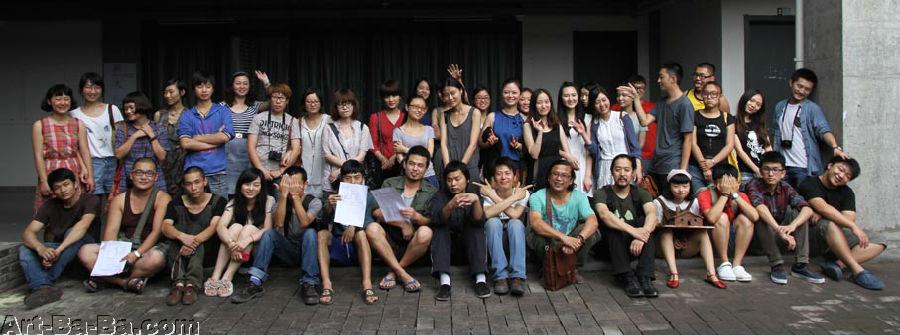
四川美院新媒体系《“薪火”行为艺术教学汇报展》合影,2012年6月,重庆
一、 蔡青访谈周斌(2012年)
蔡青:行为艺术教育的重点是什么?
周斌:行为艺术是关于身心的艺术、是开放的艺术、是关于感受力和思考力的艺术、是交流互动的艺术、是具有无所不可的自由表达精神的艺术,因而,让学生懂得主动去调养修炼自己的身心、保持敏锐的感受力、拥有自由表达的勇气和恒定执着的创作精神是最最重要的事。
蔡青:如何考虑行为艺术教学的优势,它能给学生带来其他方面教学无法达到的目的吗?
周斌:行为艺术所具有的独特的创作媒介和自由开放的创作方式,教会学生用身心去体验和感受,用头脑去分析和思考、用智慧去执行和实现。随时随地的与万物的互动交流,你走在路上、感受风吹动你的头发、感受地面的软硬变化,感受周围的噪音,感受一个乞丐突然走到你面前等等,这一切,都有可能在某一天进入你的某件作品,要做平日的有心人,懂得尊重细微之物,体会生命的尊严与意义,懂得爱。
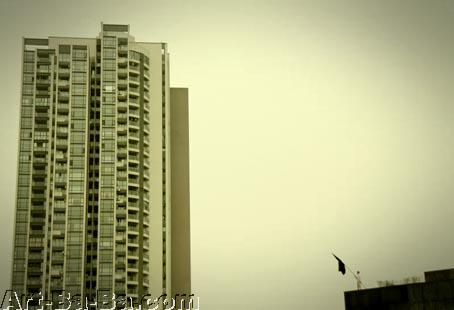
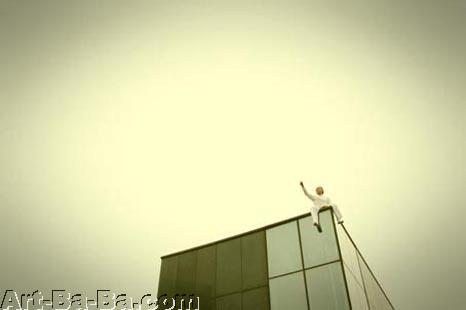
《细胞加工厂》现场作品中的郝广赛、王彦鑫。2013年3月,成都
蔡青:如何理论与实践相结合?启发学生的创作力和表现欲望?
周斌:行为艺术没有一成不变的理论,也反对标准化,但这并不影响当我们面对优秀的行为作品时,我们会被吸引、被感动、甚至被震撼、而我们还常常说不清为什么。我们相信在行为艺术的创作中有一些宝贵的经验和方法的存在,但也不是一成不变的,而这样多的不确定性,将更利于鼓励学生去自由的构想和表达,也将使他们充满去探秘的欲望。
蔡青:如何使教学不枯燥,更有层次?
周斌:当教师把教学当成创作去完成,教学将不落俗套;当教师对工作热情而执著,课堂将充满感染力;当教师对学生拥有真诚的耐心和责任感,水乳交融的成果自然产生。
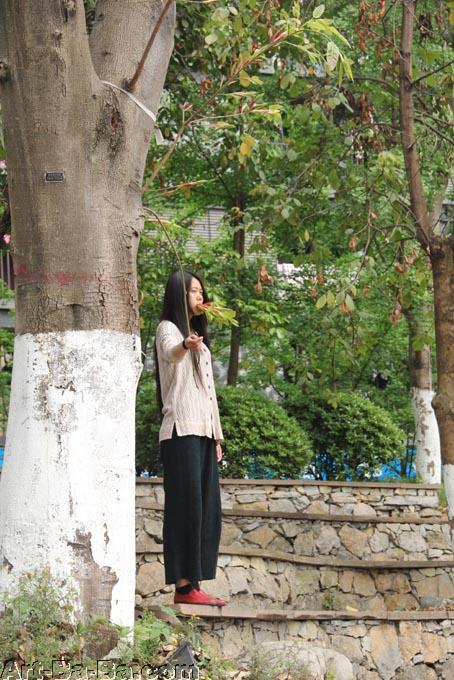
胡燕在行为课上做练习,2013年3月,重庆
蔡青:课堂上有哪些基本的练习? 你又如何给学生部置作业或提出艺术创作计划的?期末结业如何进行的?
周斌:营造适的当的学习语境,对学生专注于艺术的思考和实践是重要的。我们在课堂上聆听可安静心灵的音乐、燃清神的藏香、练习闭目冥想,因为首先需要让学生的身心安定下来,能开始专注于自己的身体和内心,能在安静的状态中感受他人与周围环境。培养恒定的专注力和感受力对于行为艺术家来说是需要长期做的功课。
我们自由轻松的散谈,关于个人的故事、一些细微的感受、日常零碎的困惑等等,我们在林间和山坡上行走、注目青草在生长、闻花的味道、体会微风掠过皮肤、感受脚下路的松软或坚硬、听虫子在煽动翅膀,等等等等,然后我们学着去表达我们身心对万物存在的感知,并希望用不同寻常的方式,我们不去考虑这是不是艺术,我们执着于自己的感动和尽可能充分的去呈现我们的感动。
当我们拥有了一定的用身体和行动作为媒材去表达所思所想的经验之后,我们开始组织一个正式的行为艺术展览,这样的活动将使学生感到兴奋和有成就感,目的是将平日细微琐碎的经验与感受进行梳理,在创作的层面将其提升和深化,形成一件更为完整的行为艺术作品。
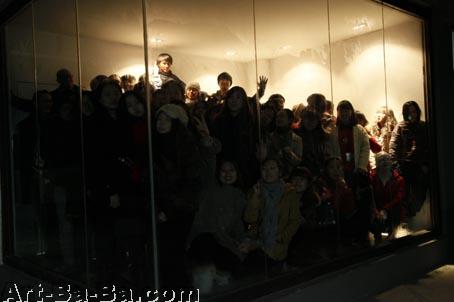
《“橱窗”行为艺术教学汇报展》合影,2012年11月,重庆
蔡青:如何启发和挖掘学生的潜质,使其自然本性表现出来。
周斌:真正的将行为艺术创作的自由开放、无所不可、尊重个体经验的创作理念植入学生的认识中,帮助他们拥有轻松自信的创作冲动,那么一切将水到渠成。
蔡青:作品评价与说明对学生是有帮助的吗? 以增进他们的分辩能力?
周斌:在课堂上,我们通过图片和录像大量的阅读行为艺术作品,从技术层面去分析作品的不同之处,提升拓宽学生的认知视野。在练习和创作后,我们让学生相互品评作品,鼓励畅所欲言的“恶搞”,以求观点犀利和尖锐,从而在辩论中明晰自身的不足,让思路更清晰,态度更开放、内心更自信。
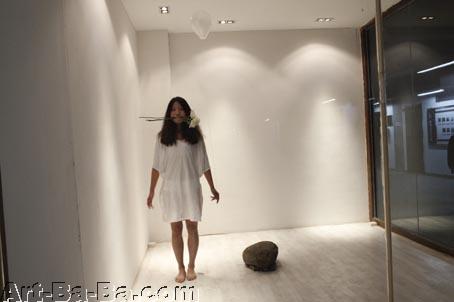
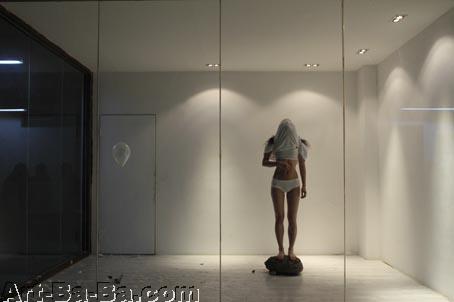
童文敏《丝》,行为艺术,2012年11月,重庆
蔡青:行为艺术之外还应增加哪些有益的科目和知识? 这些科目对行为艺术创作有何助益?
周斌:行为艺术是关于生命、关于思考的艺术,是互动交流的艺术,因而多读一些人类学、心理学、宗教、哲学、社会学方面的书是必要的。行为艺术家更需要领会生命之美、万物之尊、心灵之澈、存在之意义。
蔡青:如何向学生阐述生活与艺术的关系,如何让学生勇敢面对生活,面对生活中的挑战?
周斌:当学生领会到生命之美、万物之尊、心灵之澈、存在之意义。艺术与生活、磨砺与挑战,都应能坦然面对,明白这本身是生活不可或缺的一部分。
蔡青:谈谈你多年教行为艺术的经验与体会。
周斌:自检:不断完善自身;爱人:真诚面对学生;律己:授业有道;尽责:莫误人子弟。
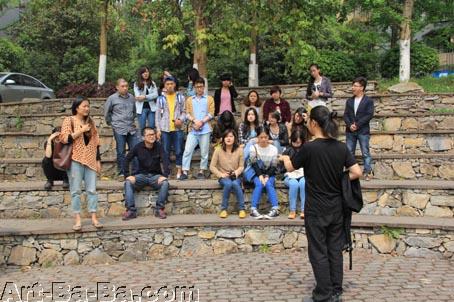
室外行为练习课(2013年3月,重庆)
二、高志彬访谈周斌(2013年)
高志彬:行为艺术走进中国大学美术教育体系可谓一次空前的突破与大胆的尝试,是什么打动了您,让您愿意到体制中来任教授课呢?
周斌:川美新媒体系邀请我给二、三年级上行为艺术的课程,初始犹豫,虽作为行为艺术的实践者自己也算是兢兢业业走南闯北十多年,但要说为人师表授业解惑,可不是随便将就的事,对这个身份我还是心存敬畏。想到自己一路走来心存感激的一个个老师,不免要反复掂量下自己的德行是不是靠谱。
我敬佩于四川美院新媒体艺术系首开先河,将行为艺术列入正式教学课程,就行为艺术在中国的现实境遇来说,这需要足够大的担当勇气和践行魄力。早在80年代的西方,行为艺术便进入了艺术大学课程,积累了丰富的教学经验。行为艺术近百年的发展过程中,有太多的经验值得我们去钩沉,对它的学习,能让我们拥有更为自由多样的艺术手段去表达我们的所思所想,关于内心、精神、智慧、关于现实的追问与呈现,其发展至今,在概念与形式上也有足够的空间让我们去释放自己的想象力,应该让年轻学子有机会了解、享受行为艺术的魅力。
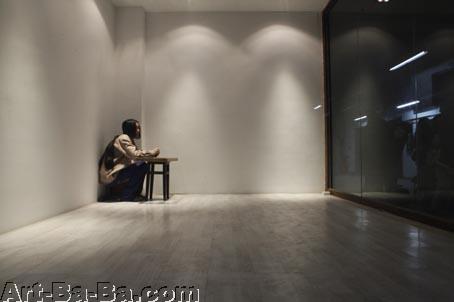
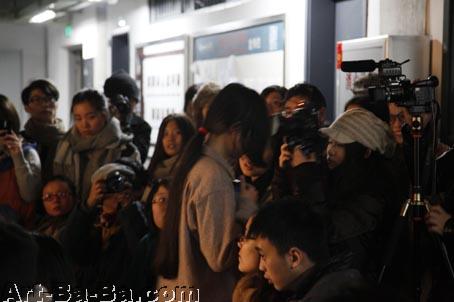
曹碧君《你好》行为艺术,2012年11月,重庆
过程:角落里,一个女生喃喃自语着回忆自己两年来的大学生活,长时间之后,手握播放着自己录音的手机,穿过观众,消失在走廊尽头。
高志彬:两个学期下来,您最大的收获是什么?学生的反馈怎样?您认为大学是否有必要开设行为艺术课程?
周斌:对我来讲和学生之间的教与学的互动是一个共同提高的过程,在前期的备课阶段我就思考到很多过去没有触及到的专业领域内的问题,教学的工作促使我更全面的去审视自己的行为艺术工作,受益匪浅。而在我教学的过程中不断有来自各方面的疑问就是:行为艺术可以教吗?我个人的教学观点是:行为艺术的教学是唤醒学生开放而无所不可的创作勇气,培养随时随地用身心去体验与表达的自觉意识,而不是教给学生一种僵死的具体的技术。
三尺讲台,最累的不是身体,而是还要调动学生们的学习热情,这可和我们当学生的时候大不同。讲解、讨论、练习、创作,环环相扣,班里不再是稀稀拉拉的十几个人了,同学们在课堂上的热情和练习实践中的优秀让我信心大涨,得寸进尺的搞出了《薪火》展、《橱窗》展、《28立方》展,五十多件作品虽不尽完美,但也足以令人欣慰,欣慰于学生充满活力的创作热情被点燃,现在川美已有了学生自己策展的每年两次的行为艺术活动《薪火》,也欣慰于外系、外校的学生来班里蹭课,而更令我深感温暖的,是学生时常送到我手中的一杯热奶茶。
高志彬:您如何让学生进入行为艺术的创作,而不只是简单了解行为艺术这个名词?
周斌:在仅有三周的行为教学时间里,我们所编制的教案是以身体为切入点来进入到行为艺术的创作中,对身体这种行为艺术的基本材料的认知、理解和运用是教学的重点。我们用冥想的方式开始我们的第一次行为练习,在安静的氛围中,关注自己的呼吸,去获取对自己肉身的细微感知和内心的感应;我们走进自然环境,用身体感知空气的湿度、聆听风吹竹叶的声响、赤脚体会草地的松软、与石头和树木对话、和偶遇的人交流,我们用许多的方法让身心变得开放与自由,逐渐拥有表达的热情与自信,我们强调身体在表达时的专注状态,并在慢的速率中展示丰富和无限,一次闭目、一个转身、一声尖叫都需不苟,作品的气场和力量由此而来,同学们很好的领会并进入了这样的状态。
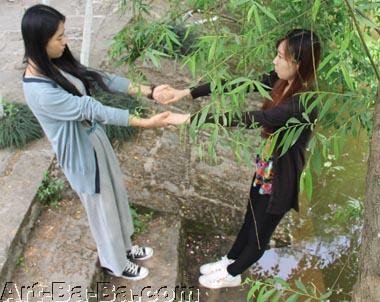
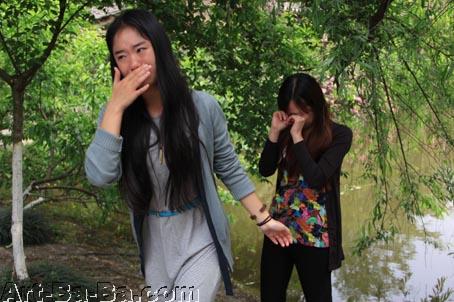
学生高铭和杨诗琪在行为艺术课上合作练习后感动落泪,2013年3月,重庆
高志彬:您是否希望您的学生今后能够走上行为艺术创作的道路,我们又该怎样通过努力让社会大众正确的了解行为艺术,从而让行为艺术不那么“可怕”?
周斌:学习行为艺术,会让我们拥有更为自由、丰富的内心和更多样的艺术手段去表达我们的所思所想,能否做职业的行为艺术家这个并不重要,随缘就好。
说到中国社会对行为艺术的误解,有四个方面的原因:首先是大众的艺术认知水平极为初级,这是我们不重视艺术教育的恶果;另外就是媒体基于吸引大众眼球的目的歪曲报道行为艺术,常常把现实中的奇闻怪事一概扣上行为艺术的帽子;三是行为艺术作为一种惯于追问和批判现实问题的艺术,不为官方体制所支持;再就是艺术家的问题,大部分人对行为艺术是浅尝即止,做个两、三年,就见风使舵,离开这个无名利的领域,留下大量的初级水平的作品。
高志彬:非常感谢您的回答,最后您对您的学生和四川美院新媒体系有什么寄语?
周斌:面对现实、心怀理想、善思敏行、同道共进。
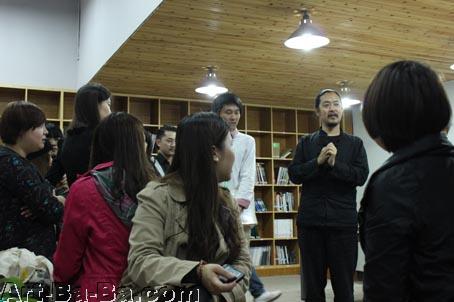
《“28立方米”行为艺术教学汇报展》展前交流,2013年3月,重庆
Two conversations about performance art education
Translation:Lance Samuel Gilbert(UK)
Cai Qing interviews Zhou Bin(2012)
CaiQing: What should be the focus of performance art education?
Z: Performance art is a physical and emotional art form, it is an open art form, one that involves both thought and perception, discourse and interaction. It is also an art form with endless possible ways in which you can express yourself. With this in mind, our task in teaching students performance art is to make them understand how to actively pay attention to and work on developing their minds and their bodies. We need to help them continually work on heightening their awareness of the world around them, and give them both the courage to express themselves and the perseverance to follow through with their creative work.
CaiQing: What is special about performance art in education? Can it offer something that other art forms can’t?
Z:By being an art form with such an independent and free approach to its practice, performance art instructs students to use their bodies to experience and feel things, use their minds to analyse and reflect and use their own wisdom to carry out and realize their ideas. They learn to interact with the world around them at any time and in any place. Say you are walking down the street, you feel the wind slightly move your hair, you notice the changes in the softness or hardness of the ground underfoot, you become aware of all the noises and sounds around you, you encounter a beggar who comes up to you, and so on. All of these things could potentially become part of one of your pieces one day. In doing performance art you learn to maintain this mindfulness in daily life, to respect small details of everyday experience. You come to view life with more meaning and awe, and learn how to love the world.
CaiQing: How do we go about combining theory and practice? How do we inspire students to create and express themselves?
Z:There is no fixed theory for performance art. It is, in fact, an art form that resists standardization. In spite of this we still have no problem being drawn in by certain brilliant pieces, being moved by them and maybe even shocked and amazed. Often we cannot tell someone why it has these effects on us. We believe that in the creative process there are valuable experiences and approaches, but these are not set in stone. With a bigger emphasis on the unexpected and the unpredictable in performance art, it is easier to encourage students to let their imaginations run wild and adopt an adventurous attitude to their work.
CaiQing: How do we make art education more interesting but not lose depth?
Z:If a teacher sees his teaching as a creative project he needs to successfully execute, his lessons will not conform to any normal conventional pattern. If a teacher has perseverance and passion for his work, his lessons will have an infectious energy. If a teacher feels genuinely responsible for and patient towards his students, they will naturally produce great work.
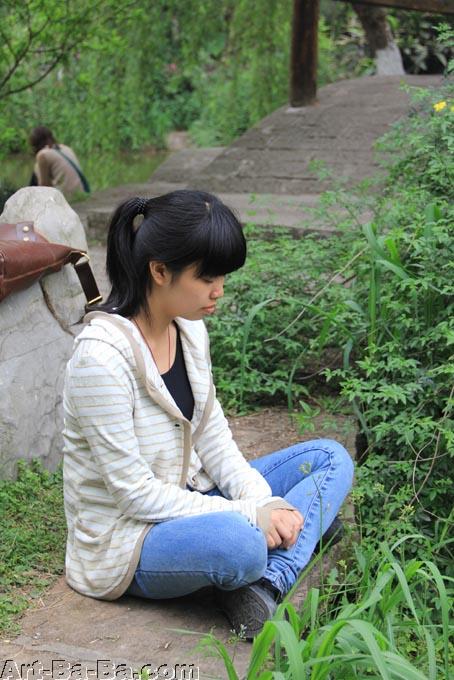
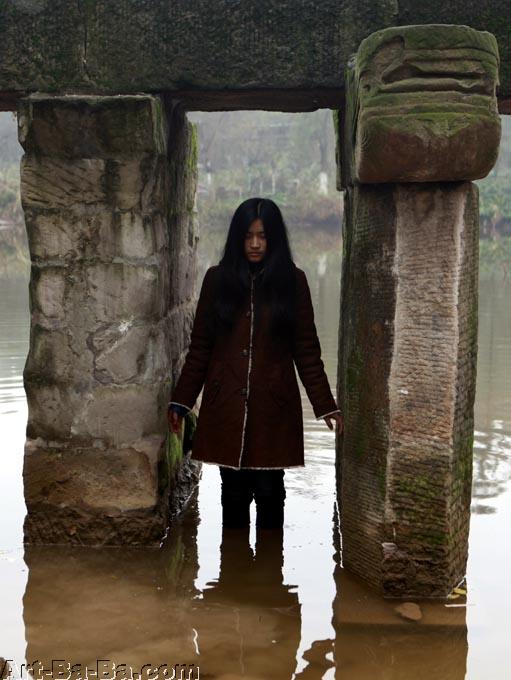
室外冥想练习,2013年3月,重庆 室外行为练习,2012年12月,重庆
CaiQing: What kind of basic exercises do you do in your classes? What kind of homework assignments or project proposals do you get students to complete? How do you evaluate their work and what criteria are there for the final grading?
Z: To provide the right context and environment for the students, I think it’s important to get students thinking about the nature of art and how to go about doing it. In class we listen to soothing music and burn Tibetan incense, we close our eyes and practise meditating. I get them doing this so they can settle down and start to become more aware of their bodies and their minds, to feel the presence of others around them and the surrounding environment. We did do this because the training concentration and perception is a necessary and long term task for performance artists.
We then go on to have casual discussions. We talk about our personal experiences, things that we have felt, the assorted problems and frustrations that we meet in our daily lives. We go for walks in forests or on hillsides, notice how the grass is growing, smell flowers, experience the breeze brush against our skin, how the ground feels beneath our feet, listen to insects beat their wings, and so on. Then we take these feelings and this new knowledge and learn how to express them in our work, and in what different and unusual ways we can express them. We don’t ever think about whether or not any of this counts for ‘art’. Rather we work hard at trying to feel the world around us and try to express what revelations we encounter in the best way we see fit.
Once we have a solid enough grounding in how to use our minds, bodies and actions to express all that we think and feel, we start to organise an official performance art exhibition. This kind of event gets the students excited and helps them to realise how far they have come since the start of the course. In this exhibition the students’ task is to sort through their various mundane experiences and feelings, and through their work give them new depth and meaning. Overall this process helps them to create a deeper and more complete piece of work.
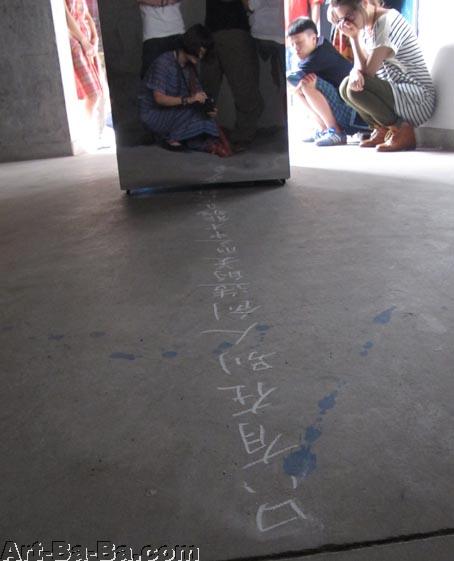
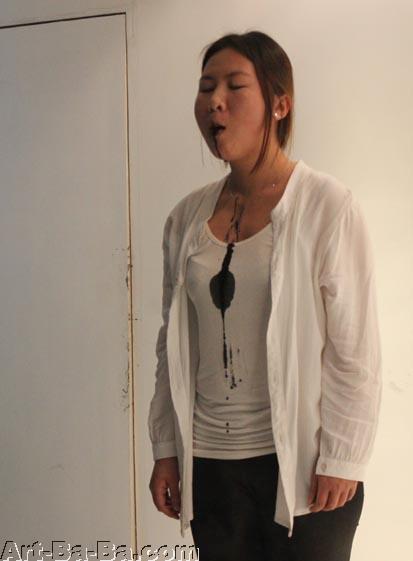
王川《移动的木箱》行为艺术,2012年6月,重庆 冼瑶《我思念我的外公》行为艺术,2013年3月,重庆
过程:一个极其缓慢移动的木箱,所过之处,留下长长的一行字。 过程:口含墨汁冻成的冰块儿,使其慢慢融化,冰块儿中的一个纸条
逐渐露出,上面写着“我思念我的外公”。
CaiQing: How do we bring out our students’ potential and allow their unique personalities to come through in their work?
Z:We have to instil in the students that real sense of freedom in the way they can express themselves in performance art. We also have to make them value their own personal and individual life experiences. We want students not only to approach their work with passion but also to be confident in their own skin. If we manage to accomplish these goals, the rest will take care of itself.
CaiQing: Is commenting on and criticizing individual student’s work in class helpful for the students? How can we improve their ability to recognize good work?
Z: In class time we look at lots of photos and video footage of pieces of performance art, and we analyse and compare them on a technical level, this helps to increase and broaden students awareness of the forms performance art can take. After each session of practise and creation, I invite students to comment on each others work, and encourage them to pick out some elements and poke fun all they like. I do this to try and produce sharper and maybe even provocative opinions, so that the students get a clearer idea of what they need to work on. I feel this process allows them to think more clearly and openly about the ideas they develop and become more confident about them.
CaiQing: Apart from performance art, what other subjects do you think are important for students be exposed to? How do you think these subjects could benefit their creative output?
Z:Performance art encompasses the way we live, the way we think and the way we interact with others. In light of this I think it is essential for artists to read widely, in particular books on anthropology, psychology, religion, philosophy, sociology, and so on. Performance artists need, maybe more than other people, to be conscious of the beauty of life. They need be open-minded and maintain a sense of awe about things around them; they need to be able to see the meaning of existence in anything they encounter.
CaiQing: How do you explain this relationship between life and art to your students? How do you make students brave enough to face the challenges that lie ahead for them?
Z:Once students have become more conscious of the things I’ve mentioned above, they will be able to deal with challenges and hardships both in art and in life with a lot more confidence and level-headedness. This is because understanding these things is an indispensible part of life.
CaiQing: Can you sum up what you’ve learnt from your experiences teaching performance art?
Z: Self reflection: You have to constantly work on improving and perfecting yourself.
Loving others: It’s important to be honest and genuine to your students.
Self discipline: Be professional in your teaching.
Duty: Do you best to put the next generation on the right path, give them a good head start.
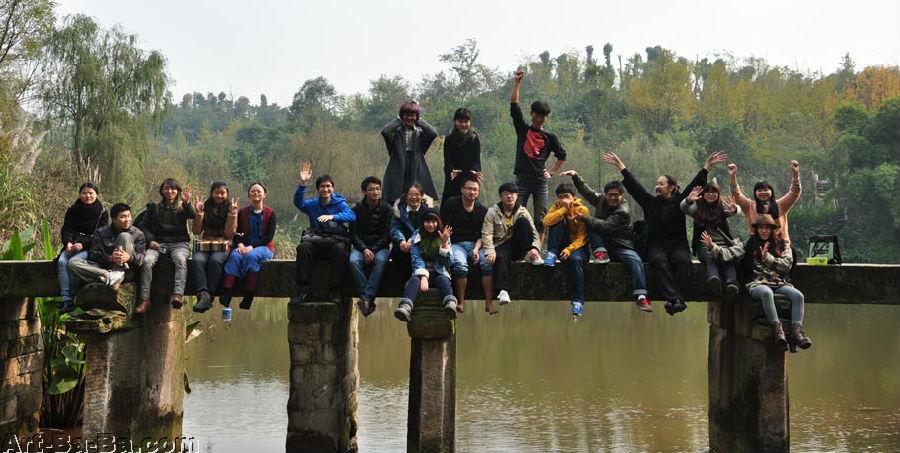
室外行为练习后合影(2012年,重庆)
Gao Zhibin interviews Zhou Bin(2013)
G:Many would see introducing performance art to Chinese universities’ fine art curriculum as a breakthrough previously undreamed of, not to mention a daring experiment. What was it that motivated you to try this? What made you willing to enter an institution and become a teacher?
Z:When the Department of New Media at Sichuan Institute of Fine Art first got in touch and invited me to teach a course in performance art to second and third years, I was hesitant. I have been running the gauntlet of being a performance art practitioner for over ten years now, but being a teacher, a role model and a problem solver for so many people, isn’t an undertaking you can consider lightly. I was kind of apprehensive about taking on such a role. Then I got to thinking about what all those great teachers that have helped me on my path have done for me all these years, and I realised it was probably my duty to also take on this role for others.
I also had great admiration for the New Media Art Department of Sichuan Institute of Fine Art for initiating something like this, and trying to bring performance art into an official curriculum. When you consider performance art’s current status in China, an idea such as this would need a lot of boldness and resolve backing it to work. Performance art was already in university art courses in the West by the early eighties, and has enjoyed almost three decades of experimentation and development. In its nearly one hundred years of history, performance art has so much to teach us, it can show us ever new ways of creating and expressing ourselves. Through exploring its possibilities we can learn so much about ourselves and reality. Conceptually and formally, it has up until now already provided us with so many avenues to expand our imaginations. This is why we can’t let students miss out it, they need a chance to understand it and explore its magic.
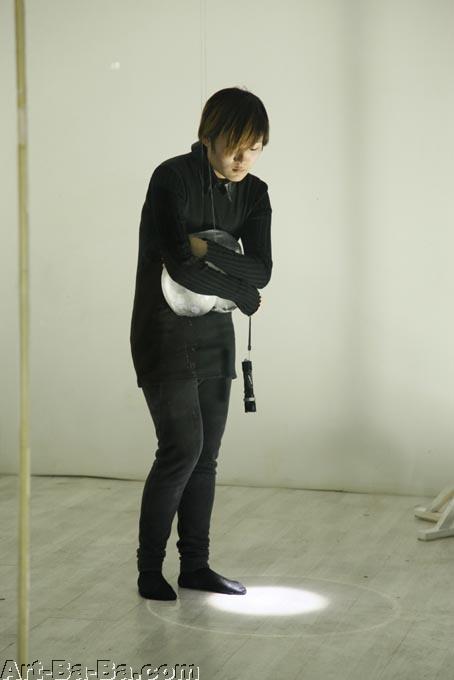
朱潇雨《冰屁股》行为艺术,2012年11月,重庆
G:After two semesters, what is the biggest thing you have gotten out of the experience? How have the students responded? Do you think now that universities should offer courses in performance art?
Z:For me, I was learning just as much from working and interacting with these students as they were learning through our classes. When I was planning and preparing the classes for the first semester I thought of many areas of performance art that I hadn’t explored properly before. Having the task of teaching performance art forced me to more comprehensively assess and evaluate my own work as an artist, which has benefited me tremendously. A question I face almost everywhere I turn is ‘can performance art be taught?’ As far as my outlook on teaching goes, teaching performance art involves awakening the students’ courage to express themselves and not hold back. You need to train them to be aware of the world around them at all times and at all places, and then to be able to process these feelings into their work. What my teaching doesn’t involve is any rigid technical instruction.
Since taking to the podium to teach I’ve found it’s not the standing for long periods of time that’s tiring, but trying to motivate them and draw them in. This is quite a contrast to what it was like when I was a student. Lectures, discussions, practise, creating, all of these activities were blended together. Classes now aren’t made up of a mere ten or so scattered students like they were then. The enthusiasm my classmates displayed and the amazing quality of work they produced motivated me immensely. That environment drove me to put on two exhibitions, one entitled “Torch” and the other “Kitchen Window”. The fifty or so pieces within were far from perfect, but they were enough to resonate with and inspire the audience. It also made a good enough impression on students from other departments to make them start coming over to our department to hang around, and best of all was sometimes they would buy me a cup of hot milk tea.
G:How do you go about getting students to start doing performance art, rather than just getting them to understand what performance art is?
Z:In the mere three weeks we have to teach this course, the curriculum we designed takes the body as a way into the practice of performance art. By the end of it we hope students are able to recognise the potential of their bodies to be an artistic medium, both theoretically and practically. We use meditation-like activities to start the first practice session, in a quiet environment, focusing on breathing, trying to acquire a sense of being in our bodies. We also go to more natural settings outdoors where we try to notice things like the humidity of the air around us, the rustle of bamboo leaves stirring in the wind and feel of the soft grass under our bare feet. We’ll interact with rocks and trees, have conversations with people we happen to meet, do all kinds of different things to make ours bodies and minds feel more at ease and free. This slowly builds up more enthusiasm and confidence. We put a lot of emphasis on concentration and presence when we are working, and then gradually we can start the potential for our bodies to be tools of expression reveals itself. The close of an eye, the turn of your torso, a scream, all of these have to be done conscientiously, this is where the atmosphere and strength of a piece comes from. The students take to this very well and really get into the right frame of mind.
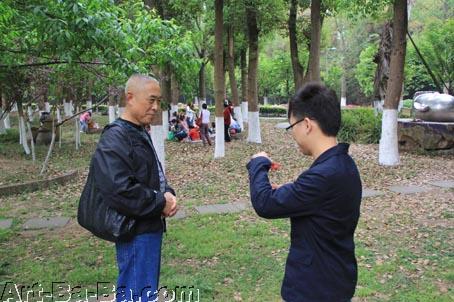
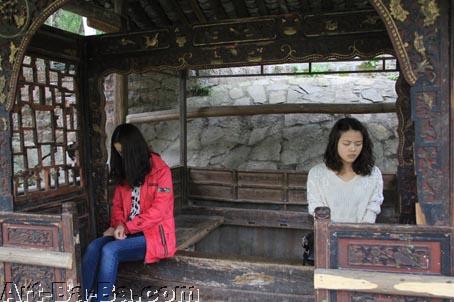
王世兵在行为练习课上与路人互动,2013年3月,重庆 室外冥想练习,2013年3月,重庆
G:Do you hope to see many of your students go on to make a career of performance art? How can we help the wider public understand performance art, so they see it’s not all that ‘shocking’?
Z:Through learning performance art we gain a freer and richer outlook on art and life, as well as a more varied vocabulary of ways to express ourselves. Whether or not you can go on to become a professional performance artist is not as important, you just have to see how things work out. As for the misunderstanding Chinese society has towards performance art, I think there are four main reasons for this: Firstly, the general public have a very low and rudimentary understanding of art in general, which is a result of a general lack of art education in society as a whole. At the same time the media tend to offer a distorted picture of performance art, focusing on what can be easily twisted and sensationalised to capture their audiences’ attention and cause a stir. Often all manner of strange things that crop up in society are rounded up by the media and labelled as performance art. The third reason is that since performance art is an art form often used to question and criticise problems in contemporary society, it is generally unlikely to be supported by the authorities. Finally there’s also the problem of the artists. Most artists see performance art as something to be dabbled in for two or three years and then dropped for other art forms that yield greater recognition and reception. This means that there’s a huge amount of performance art that is done by artists working at a very beginner level.
G:Thank you very much for your answers. Finally, is there anything you’d like to say to your students and the Sichuan Institute of Fine Arts?
Z:Let’s face reality, our ideals close to our hearts, moving forward together.
文章选自《UP-ON成都,身体美学与场景凸现》
主编:查常平
2013年版



